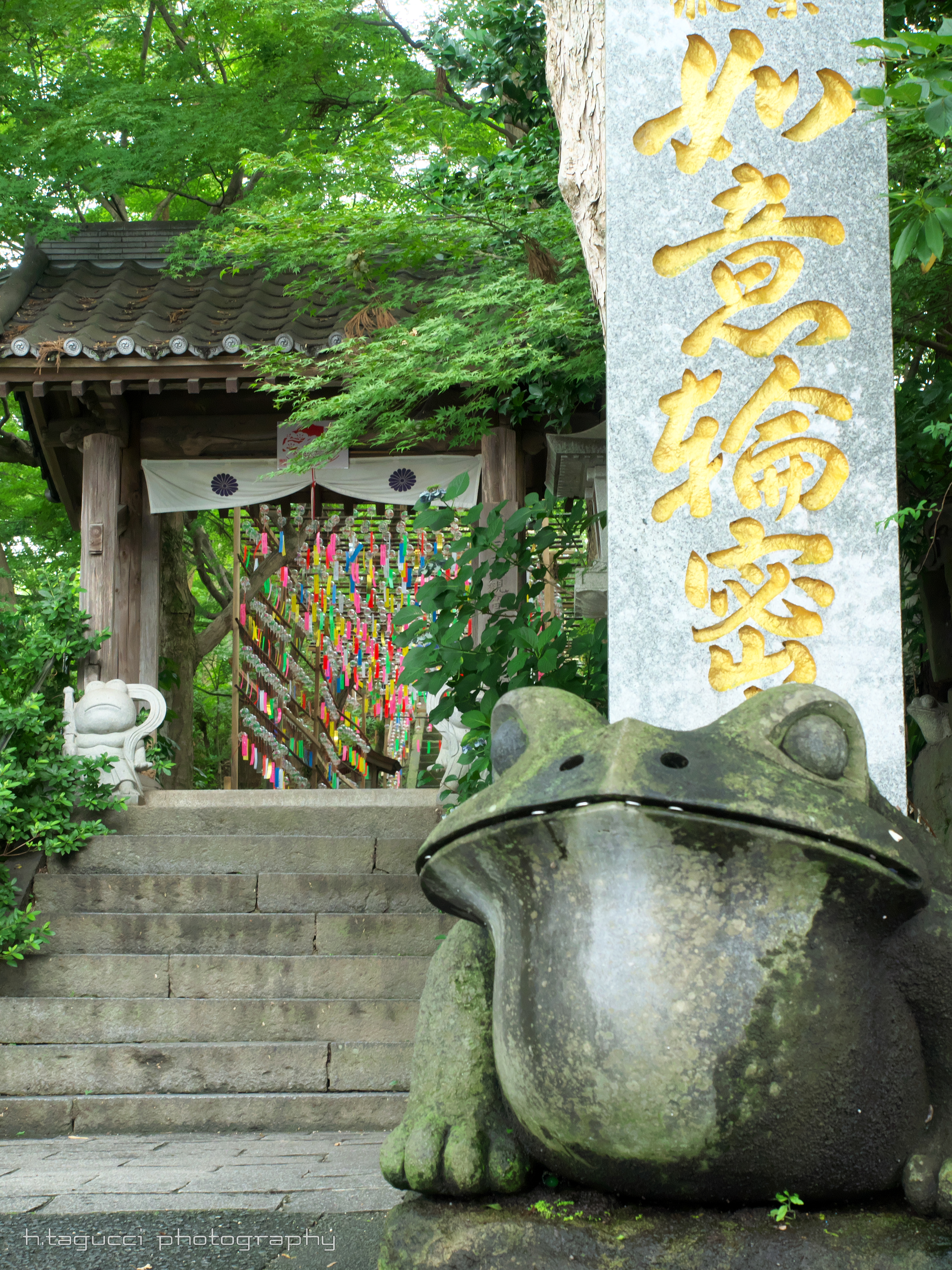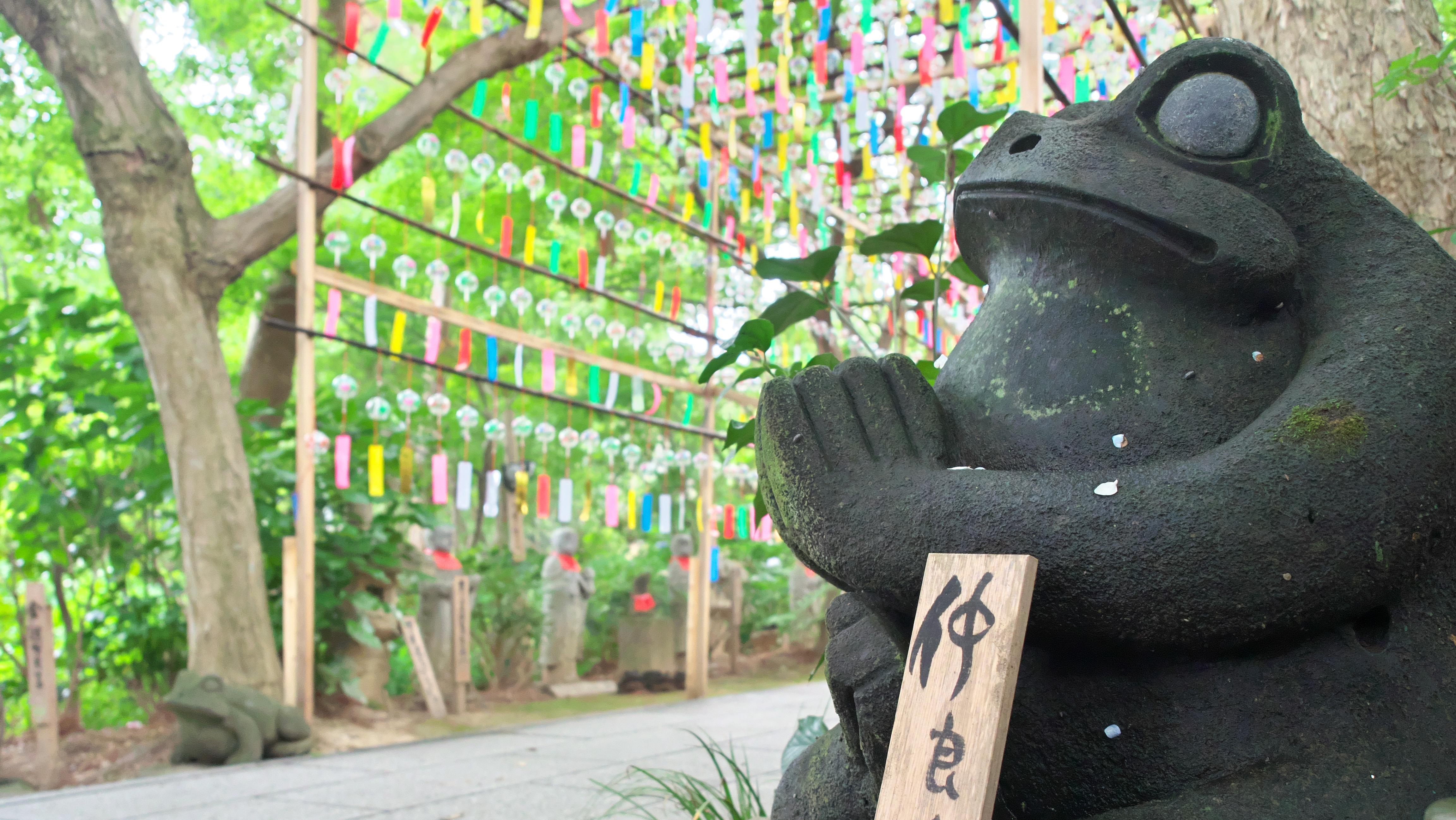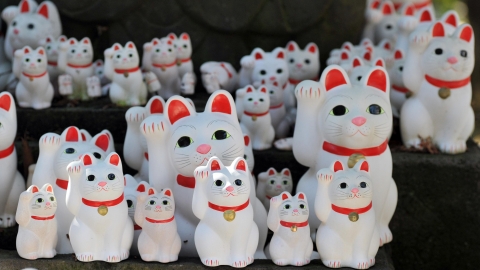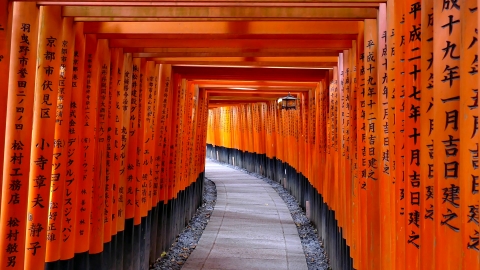More than a thousand years of history and the beginning of Frog Pagoda
Nyoirin-ji was started in 729 during the Nara period. In 1586, the temple was neglected for a while due to severe damage from a fire during the war. In the early Edo period, Lord Arima Tadayori restored the main hall, and Matsuzaki, who often used this place for prayer, continued the restoration work.
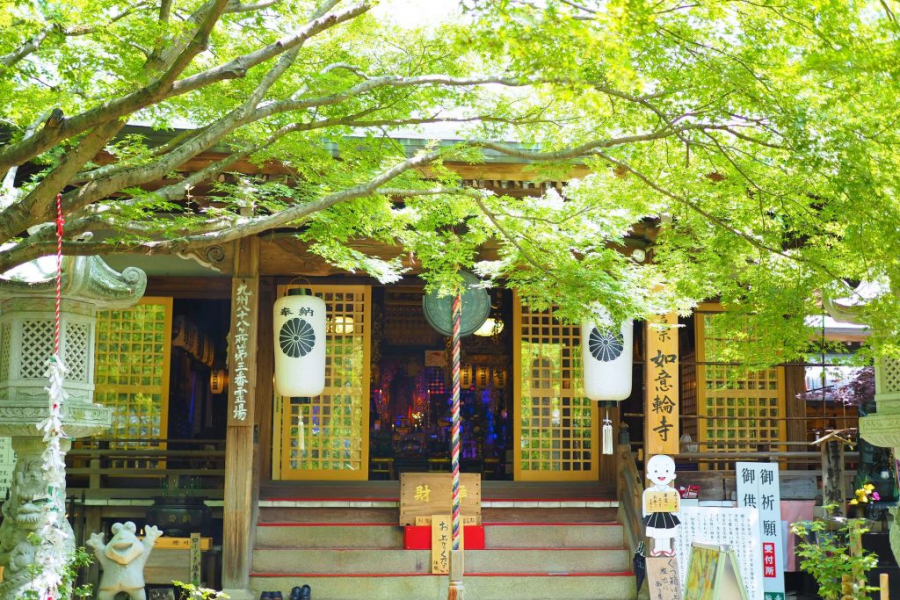
Frog Pagoda facade
The name Kaerudera originated from the monk Fumihito Hiraguchi who brought back some frog statues to decorate the temple after his visit to China in 1992. In fact, he was not particularly fond of this animal but just wanted to collect some interesting artifacts to help dispel the desolate look of the temple at that time in order to attract more young people to visit. As a result, the number of frog statues gradually increased, and gradually visitors also began to contribute more statues, and as a result, the temple has now become a "home" for more than 5,000 frog statues of all sizes, shapes and colors. The previous boring landscape gave way to new colors, followed by a sharp increase in the number of visitors every year, making Kaerudera one of the prominent cultural and tourist destinations of Fukuoka Prefecture.


An army of frogs in Kaerudera
Welcome to the world of frogs
Just a 15-minute walk from Mitsusawa Station on the Nishitetsu Tenjin Omuta Line, you will arrive at the front gate of Kaerudera. A large, friendly-looking frog statue greets visitors, and once you step inside, you will see rows and rows of frog statues, big and small, scattered throughout the 6,600 square meter campus. Although frogs may not be cute animals in the eyes of some, the variety of shades of the statues here, combined with the fresh, pleasant space, will create a very comfortable atmosphere.

Kaerudera is gorgeous in the red leaf season
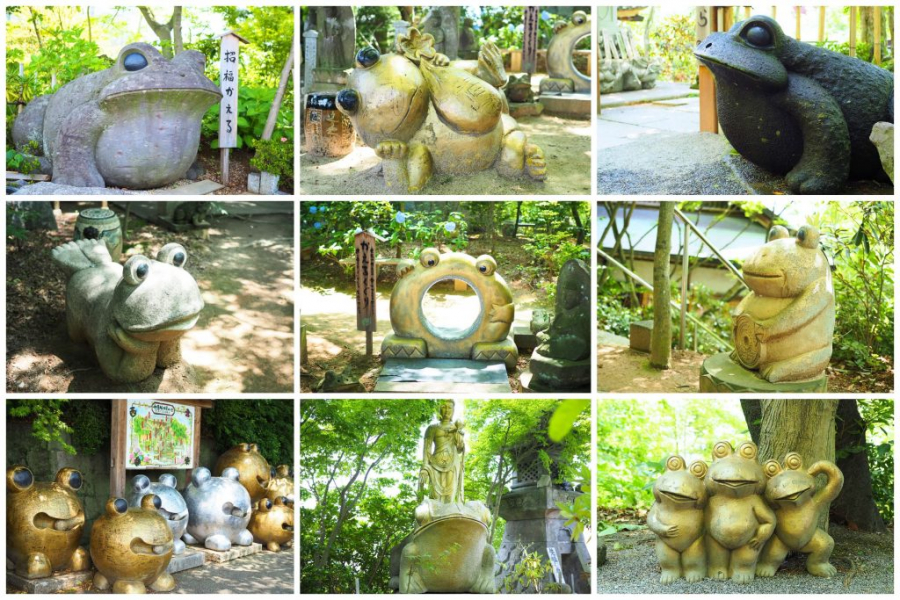
Welcoming visitors are a myriad of frog statues.
The symbol of Kaerudera, besides thousands of frog statues, is the wooden Nyoirin Kannon statue, which is considered a cultural treasure by Fukuoka Prefecture, and is only allowed to be seen by visitors in the Year of the Snake, an event that happens “once every 12 years”. In addition, July 17th every year is called “Wind Chime Festival” because on this day, Kaerudera is covered in thousands of small wind chimes. Visitors can buy wind chimes and write their wishes on a piece of paper hanging below, then hang it here. The sight of colorful wind chimes swaying in the wind and making a pleasant jingling sound when the wind blows is the image that visitors, especially young people, look forward to the most every year at this lovely temple.
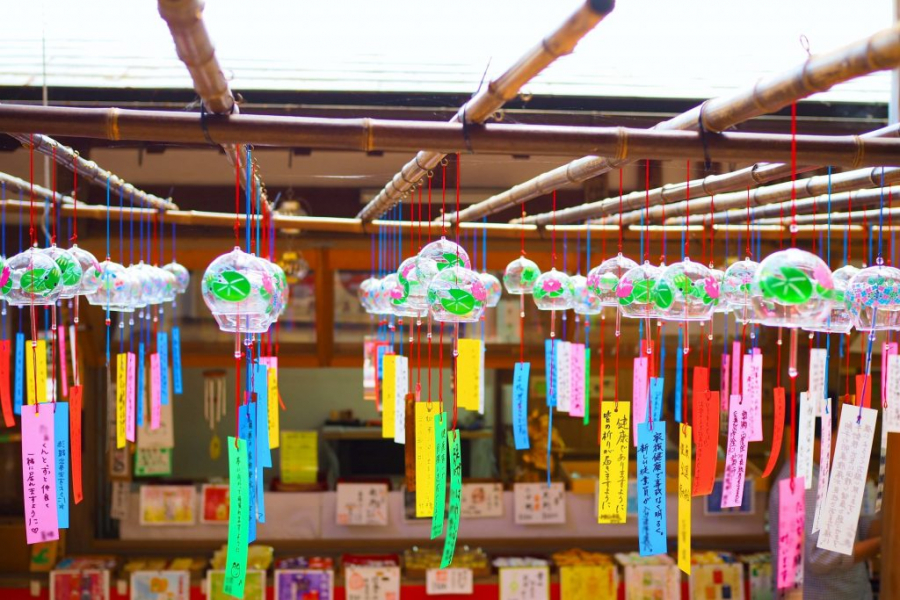
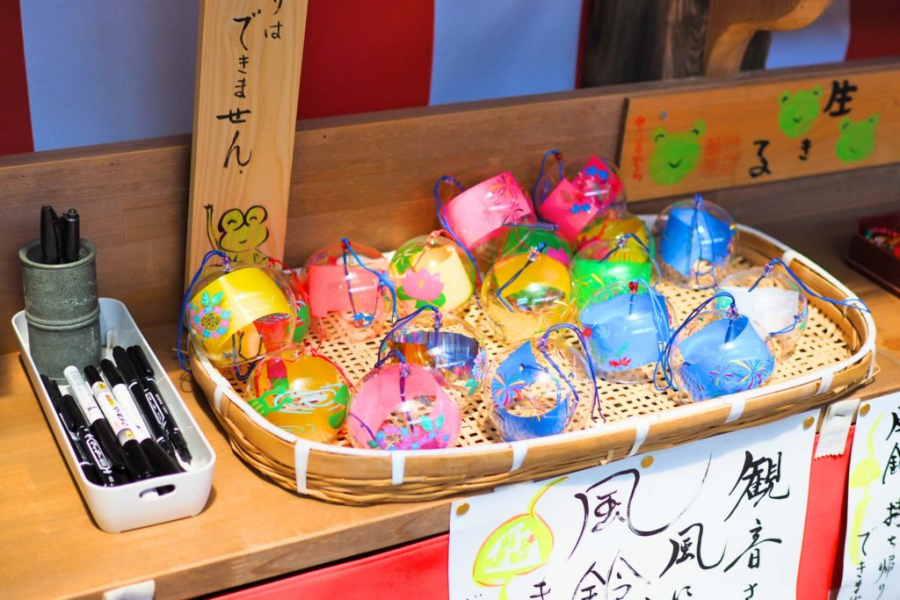
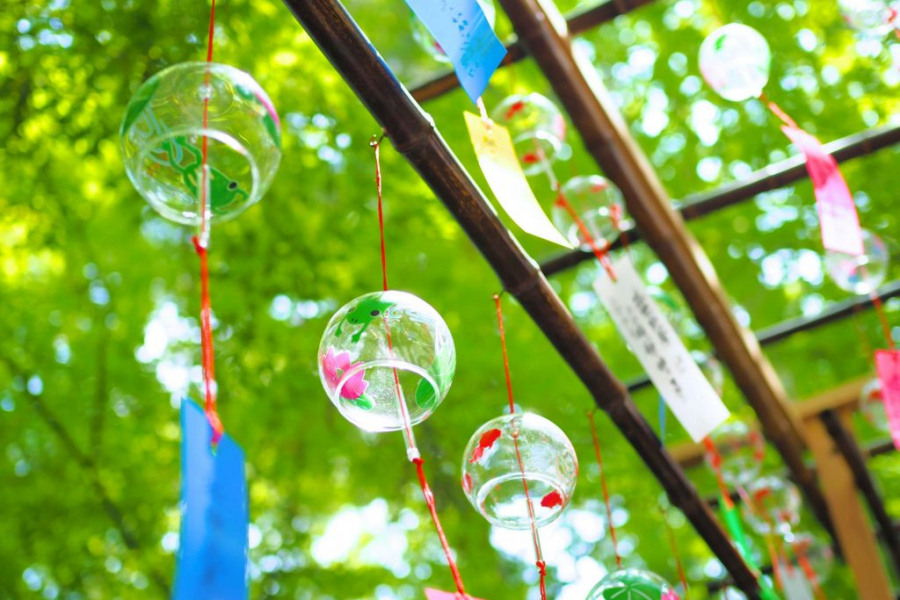

Colorful wind chimes at Frog Temple
Why is Frog Pagoda popular with tourists?
“Nyoi” in the official name Nyoirin-ji means that everything will go as desired. “Kaeru” in Japanese means frog, and is also homophonous with the verb Kaeru (帰る) meaning “to return”, so frogs are animals that represent preservation, keeping objects or people back to their origins.
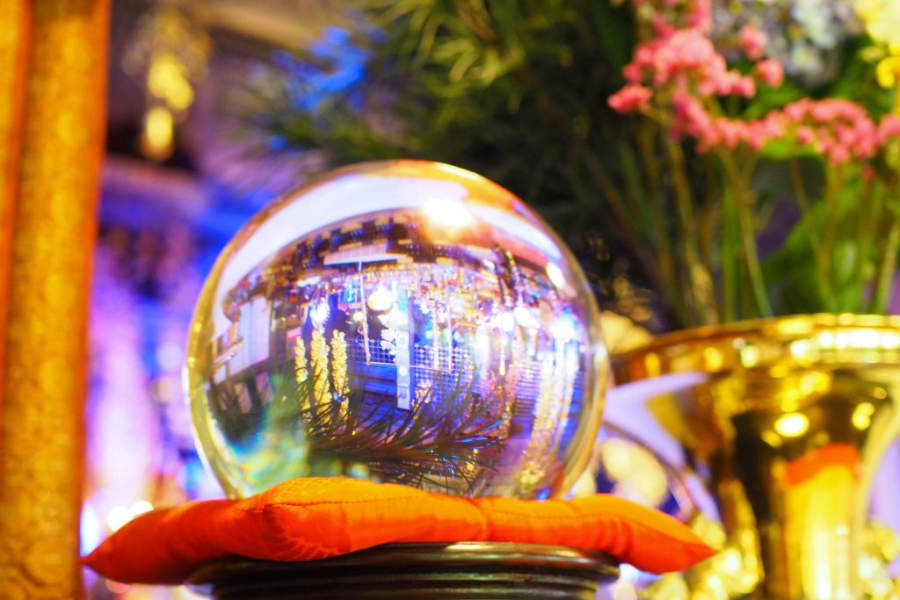
In the main hall there is a crystal ball, which is said to be able to ward off evil spirits for anyone who touches it.

Glittering souvenirs at Frog Temple
The word "Kaeru" also means "return safely", so this temple is considered one of the sacred places in Japan. The beautiful meaning of the name combined with the colorful, cheerful scenery is what helps Kaerudera attract a large number of visitors of all ages.





